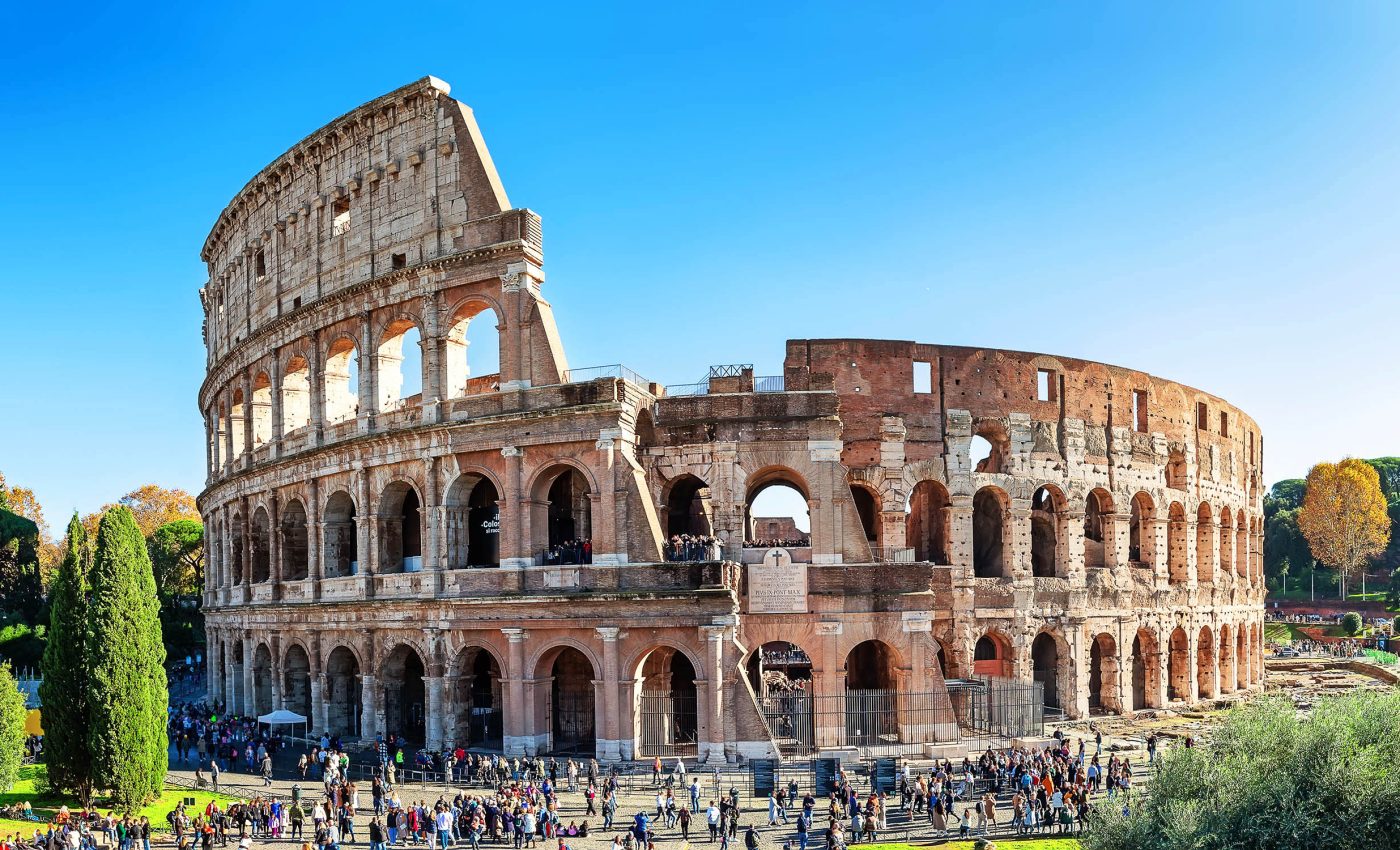
How ancient Romans made such incredibly durable concrete is no longer a mystery
The grandeur and innovation of ancient Roman architecture is etched into the concrete of the very structures and monuments that are still standing today after thousands of years.
From the awe-inspiring Pantheon, with its massive unreinforced concrete dome, to aqueducts that still channel water into the city, ancient Roman engineering continues to amaze us.
But what exactly gave their concrete such enduring strength?
Admir Masic, a professor of civil and environmental engineering at MIT, has been captivated by this very question. Alongside a team from Harvard University and laboratories in Italy and Switzerland, Masic decided to uncover the mysteries of Roman concrete.
“Ever since I first began working with ancient Roman concrete, I’ve always been fascinated by these features,” he says, referring to the tiny white mineral chunks embedded in the material.
Ancient concrete and lime clasts
For years, these white inclusions, known as “lime clasts,” were thought to be a sign of sloppy mixing or inferior materials. But Masic wasn’t convinced.
“The idea that the presence of these lime clasts was simply attributed to low quality control always bothered me,” he notes.
If the Romans were meticulous in their construction methods, why would they overlook such an important detail?
Using advanced imaging and chemical mapping techniques, the team discovered that these lime clasts weren’t accidental at all. They were, in fact, a deliberate addition that gave the concrete a unique self-healing ability.
How ancient Romans made concrete
Traditional thinking suggested that the Romans used slaked lime — a paste-like substance formed by combining lime with water — in their concrete.
However, the presence of the lime clasts hinted at a different method. Masic wondered, “Was it possible that the Romans might have actually directly used lime in its more reactive form, known as quicklime?”
The team’s research confirmed this hunch. The lime clasts were formed at extremely high temperatures, indicative of a process called “hot mixing.”
This method involves adding quicklime directly to the mix, causing exothermic reactions that significantly enhance the properties of the concrete.
Self-healing concrete in ancient times
The benefits of hot mixing are substantial. “First, when the overall concrete is heated to high temperatures, it allows chemistries that are not possible if you only used slaked lime,” Masic explains.
This means the concrete could form compounds that contribute to its durability.
“Second, this increased temperature significantly reduces curing and setting times since all the reactions are accelerated, allowing for much faster construction,” Masic continued.
But perhaps the most remarkable advantage is the self-healing property it imparts to the concrete.
As tiny cracks form over time, they tend to pass through the brittle lime clasts. When water enters these cracks, it reacts with the quicklime to form a calcium-saturated solution.
This solution can then recrystallize as calcium carbonate, effectively filling the cracks and preventing them from spreading.
Testing the theory
To validate their findings, the team created samples of hot-mixed concrete using both ancient and modern recipes. They deliberately cracked these samples and introduced water.
In just two weeks, the cracks had completely healed in the samples containing quicklime, halting the flow of water entirely. Samples made without quicklime showed no such healing.
These insights have practical implications for today’s world.
“It’s exciting to think about how these more durable concrete formulations could expand not only the service life of these materials but also how it could improve the durability of 3D-printed concrete formulations,” says Masic.
By extending the lifespan of concrete structures and enabling lighter designs, this ancient technique could play a role in reducing the environmental impact of cement production.
Given that cement manufacturing accounts for about 8% of global greenhouse gas emissions, innovations like this are more important than ever.
Durability plus environmental benefits
Masic’s lab isn’t stopping at self-healing concrete. They’re also exploring formulations that can absorb carbon dioxide from the air.
Combining these approaches could lead to a new generation of concrete that not only lasts longer but also contributes to carbon reduction efforts.
The discovery underscores a fascinating intersection of ancient wisdom and modern technology.
By re-examining historical materials with today’s scientific tools, we’re able to unlock secrets that could have a profound impact on our future.
What happens next?
As the team moves forward with commercializing this modified cement material, the possibilities seem vast.
From more resilient infrastructure to environmentally friendly building practices, the lessons learned from Roman concrete could pave the way for significant advancements in construction.
It’s intriguing to think that by looking back at techniques used over two millennia ago, we might find solutions to some of today’s most pressing challenges.
What other ancient secrets might be waiting to be discovered, and how could they shape the world of tomorrow?
The full study was published in the journal Science Advances.
—–
Like what you read? Subscribe to our newsletter for engaging articles, exclusive content, and the latest updates.
Check us out on EarthSnap, a free app brought to you by Eric Ralls and Earth.com.
—–













